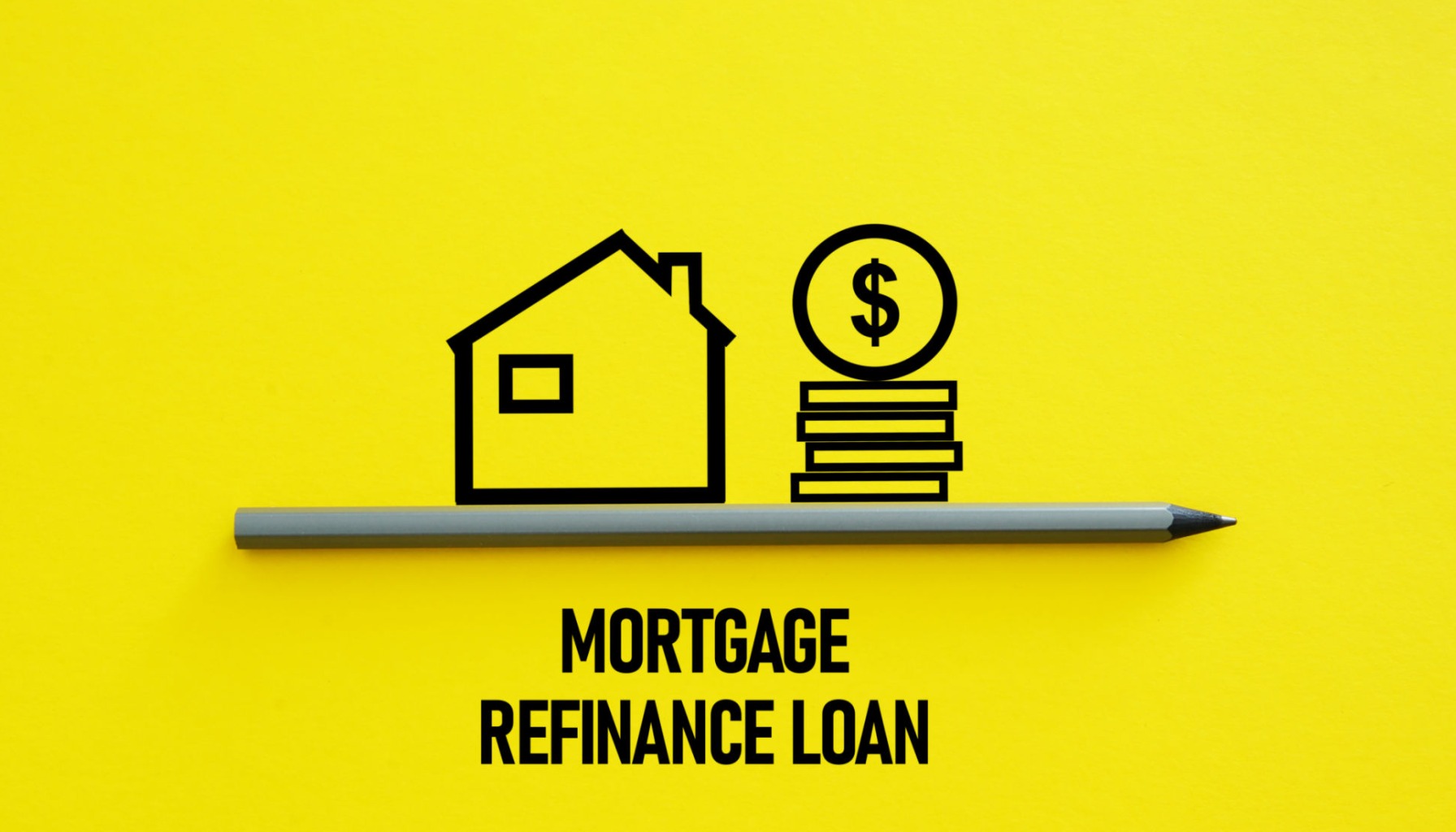The mortgage rates today are showing a slight uptick, with the national average 30-year fixed refinance rate climbing by 4 basis points to 6.89% as of Saturday, November 8, 2025, according to Zillow. This small shift might seem insignificant at first glance, but for homeowners looking to refinance, it's a signal worth paying attention to, potentially pushing up monthly payments for some.
Mortgage Rates Today: 30-Year Refinance Rate Hits 6.89% After 4 Basis Point Rise
These small movements in interest rates as pieces of a larger puzzle. They aren't just numbers; they reflect a dynamic economy, the Federal Reserve's strategies, and ultimately, how much it costs you to borrow money for your home. So, let's break down what this 4 basis point rise really means and what else is happening in the financial world that could affect your refinance plans.
Understanding the Basis Point Jump: More Than Meets the Eye
A basis point sounds technical, but it's simply one-hundredth of a percent. So, a 4 basis point increase means that the average interest rate went up by just 0.04%. While tiny, when applied to the large sums involved in a mortgage, it can have a noticeable impact.
For instance, if you were looking to refinance a $300,000 mortgage, a jump from 6.85% to 6.89% on a 30-year loan could mean your monthly principal and interest payment increases by a small amount, perhaps around $7-$8. Over the life of the loan, this can add up, though it's not a dramatic change.
It’s also important to note the other rates Zillow is tracking:
- The 15-year fixed refinance rate saw a more significant jump of 7 basis points, moving to 5.84%. This fixed-rate option is generally less expensive but has higher monthly payments compared to a 30-year.
- The 5-year Adjustable Rate Mortgage (ARM) refinance rate increased by 8 basis points, reaching 7.56%. ARMs often start with lower rates but can change, making them a riskier bet if rates continue to climb.
This latest data also shows the 30-year fixed refinance rate is up 2 basis points from the previous week's average of 6.87%. These weekly shifts give us a clearer picture of the trend.
The Federal Reserve's Role: A Balancing Act on Interest Rates
To truly understand why mortgage rates are where they are, we need to look at the big picture, and that picture includes the Federal Reserve. As you know, the Fed has been actively adjusting interest rates to manage the economy.
On October 29, 2025, the Fed made its second consecutive cut to its benchmark interest rate, lowering it by 0.25 percentage points. This brought the target range to 3.75% to 4.00%. This move signals the Fed's concern that the economy might be slowing down, especially in the job market.
My take on this is that the Fed is walking a very fine line. They want to stimulate the economy and prevent a recession, but they also need to keep inflation in check. It's like trying to steer a large ship – you can't make sudden, sharp turns without risking a disaster.
There were a couple of interesting points about this Fed decision:
- A Divided Vote: Not everyone on the Fed's decision-making committee agreed. Some thought a rate cut wasn't needed, while others wanted a bigger cut. This disagreement tells me they are wrestling with the complex economic data.
- Cautious Outlook: Fed Chair Powell made it clear that another rate cut in December isn't guaranteed. He mentioned that the economic signals are mixed, and issues like the government shutdown have made it harder to get clear data. This uncertainty is a key factor influencing mortgage rates.
- Ending Asset Reduction: Big news here! The Fed will stop reducing its holdings of assets (like bonds) starting December 1, 2025. This is a significant shift in their monetary policy, as they've been actively shrinking their balance sheet. Ending “Quantitative Tightening” (QT) can sometimes put downward pressure on longer-term interest rates, potentially influencing mortgage rates down the line, though we're seeing an immediate upward tick.
Economic Signals: Mixed Messages for Homeowners
The Fed's decisions are a response to what’s happening in the real economy, and as the data shows, those signals are anything but clear right now.
- Labor Market Worries: The main reason for the Fed’s rate cut seems to be worries about jobs. We're seeing signs that the hiring pace is slowing down, which can be an indicator of broader economic weakness.
- Inflation Still a Concern: Even with the rate cuts, inflation hasn't fully disappeared. Prices are still higher than the Fed's target of 2%. This makes it tough for the Fed to cut rates aggressively, as doing so could push inflation even higher.
- Data Gaps: The recent government shutdown has caused headaches for economists and policymakers alike. It's made it harder to get timely and accurate data on things like employment and consumer spending, leading to the “mixed signals” Chair Powell referred to. This lack of clarity contributes to mortgage rate volatility.
Recommended Read:
30-Year Fixed Refinance Rate Trends – November 7, 2025
What This Means for Your Refinance Decision Today
So, how do these numbers and economic trends affect you if you're thinking about refinancing?
1. The Impact of a 4 Basis Point Increase on Monthly Payments:
As I mentioned earlier, a small increase like 0.04% might not sound like much. But a refinance decision is a long-term commitment.
- Slightly Higher Costs: If you were close to securing a rate at 6.85%, you're now looking at 6.89%. For a substantial loan, this is a few extra dollars each month.
- Opportunity Costs: For some, this might mean the breakeven point for refinancing (where your monthly savings outweigh the closing costs) gets pushed out a little further. It’s crucial to do the math for your specific situation.
2. How Your Credit Score Impacts Your Refinance Rate Today:
It's vital to remember that the reported national average is just that – an average. Your personal refinance rate will be heavily influenced by your creditworthiness.
- Excellent Credit (740+): If you have a strong credit score, you'll likely qualify for rates below the average. This 4 basis point rise might affect you less if you're already getting a great deal.
- Good Credit (670-739): You'll likely get rates closer to the average, meaning this uptick could nudge your payment up.
- Fair Credit (580-669): You might see rates significantly higher than the average, and any increase will feel more pronounced.
This is why I always advise my clients to check their credit report and work on improving their score before applying for a refinance. It can literally save you thousands over the life of your loan.
3. The Role of Debt-to-Income Ratio in Refinancing:
Another critical factor lenders look at is your debt-to-income ratio (DTI). This is the percentage of your gross monthly income that goes towards paying your monthly debt obligations.
- Lower DTI is Better: Lenders prefer a lower DTI because it indicates you have more disposable income and are less likely to struggle with payments.
- Impact on Rates: A lower DTI can also help you secure a better interest rate. If you have significant credit card debt or other loans, paying some of it down before refinancing can improve your DTI and potentially get you a lower rate, offsetting some of the recent increases.
Looking Ahead: What to Expect from Mortgage Rates
The current environment, with the Fed’s cautious approach and conflicting economic data, suggests that mortgage rates might not see a dramatic drop anytime soon. While the Fed has cut rates, their messaging indicates they're waiting for more concrete signs of economic stability and inflation control.
My personal opinion is that we'll likely continue to see some fluctuation. Rates could gently tick up or down based on weekly economic reports and Fed pronouncements. It’s less about chasing the absolute lowest possible rate and more about refinancing when the overall picture makes sense for your financial goals and when you can secure a rate that offers a clear benefit over your current mortgage.
For homeowners, my advice remains consistent:
- Stay Informed: Keep an eye on economic news and mortgage rate trends.
- Run the Numbers: Use refinance calculators to see if it makes sense for your specific situation, factoring in closing costs and your break-even point.
- Talk to Professionals: Consult with mortgage brokers and financial advisors to get personalized advice.
“Invest Smart — Build Long-Term Wealth Through Real Estate”
Norada's team can guide you through current market dynamics and help you position your investments wisely—whether you're looking to reduce rates, pull out equity, or expand your portfolio.
Work with us to identify proven, cash-flowing markets and diversify your portfolio while borrowing costs remain favorable.
HOT NEW TURNKEY DEALS JUST LISTED!
Speak with a seasoned Norada investment counselor today (No Obligation):
(800) 611-3060
Recommended Read:
- When You Refinance a Mortgage Do the 30 Years Start Over?
- Should You Refinance as Mortgage Rates Reach Lowest Level in Over a Year?
- NAR Predicts 6% Mortgage Rates in 2025 Will Boost Housing Market
- Mortgage Rates Predictions for 2025: Expert Forecast
- Half of Recent Home Buyers Got Mortgage Rates Below 5%
- Mortgage Rates Need to Drop by 2% Before Buying Spree Begins
- Will Mortgage Rates Ever Be 3% Again: Future Outlook
- Mortgage Rates Predictions for Next 2 Years
- Mortgage Rate Predictions for Next 5 Years
- Mortgage Rate Predictions for 2025: Expert Forecast



